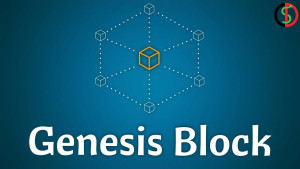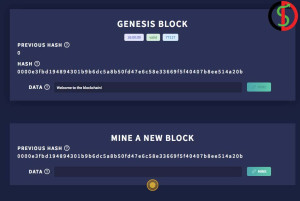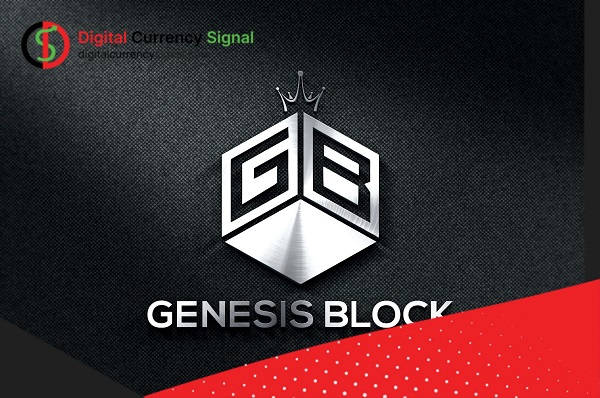A genesis block is the first block entered into any blockchain. This block is also known as Block 0 or sometimes Block 1. A genesis block is also called a “genesis block”. The word “genesis” literally means “origin”, “genesis” and “creation”. In religious texts, this word is used to refer to the origin of life and the universe, which is why it is mentioned in the blockchain field. A block sent to the blockchain refers to a previous block, but there is no block before the genesis block.
Since there is no other block that references the first block, the Genesis block is hard-coded into the blockchain. In the Bitcoin blockchain, the first block was created on January 3, 2009. The reward for this block was 50 bitcoins, which cannot be used forever. This block has no activity.
What is the Genesis Block?
Blockchain is a ledger where network information such as transactions or smart contracts is written. This information is recorded in blocks with a time stamp and a limited time is given to record the information in each block. If we just want to express the record of information, then we can think of the blockchain as a ledger in which information about the network is written, and each page of this ledger represents a block. Each time a page is finished, we go to the next page and cannot write more information.
We have a similar process in blockchain; Once each block of data is filled, no more data can be written, and we will insert a new block. The hash information of each block is applied to the next block and forms a linked set; Therefore, once information is recorded in a block, it cannot be changed. As mentioned, in blockchain, the hash of information of each block is kept in the next block, but in the case of the first block, there is no previous information, and this value is considered null for that one. this. This block is called the genesis block. The word genesis means origin and as the name suggests, it is the beginning of the blockchain network.
The importance of a genesis block
As we said, the initial block forms the basis for the design and development of the Bitcoin digital currency. Also, the first block created on the Bitcoin blockchain is the Genesis block, created by an unknown person or group named Satoshi Nakamoto. The Genesis block is very important in the blockchain. It is better to know that without the Genesis Block, it is difficult for miners to trust the blockchain, and know when and how to start working. Although in theory, in practice no starting block is necessary.

However, there must be a starting point to gain the trust of community members. But in the physical and real world, each chain needs an initial link to be created. Genesis block is one of the important elements of blockchain. Bon, if this element exists, it is not known exactly when the blockchain was created. Blockchains have emerged to explain things. Therefore, in the first step, it should be explained. A blockchain without a blockchain is like a building without a foundation. It’s like participating in a race without knowing where to start. Not having a configuration block complicates matters further.
What digital currency has a genesis block?
Every digital currency has a genesis block with its blockchain. Of course, the Genesis Block is not called by this name by all experts. Some know the first block as Block 0 and others as Block 1. Some of the digital currencies with Genesis Block are:
- (Bitcoin)
- (Litecoin)
- (Ethereum)
- (Monero)
- (Nem)
- (Stellar)
The function and interaction of nodes in the main block
In general, every computer connected to a blockchain network is called a node. In the blockchain, we have two types of nodes: full node and light node or light node or node for short. Full nodes are required to follow and accept all relevant blockchain rules and have a copy of the whole. These people participate in a process called Initial Block Download, or IBD for short. For example, in Bitcoin, the genesis block is written directly to the software of the entire nodes of this network, and therefore, only this block does not need to be downloaded, and these people start their work with block number 1. In addition, all nodes perform authentication tasks, which require a large amount of storage memory. Therefore, these principles are very important to maintain security and privacy.

On the other hand, Litenodes does not need to download and store a full copy of the blockchain to work, it downloads only a part depending on the performance of the end user. These people usually don’t need a network block first and need to be connected to a full node to work. A lightweight node can get the information it needs from a full node. In this case, these nodes must trust the entire node to provide valid information.
the last word
A genesis block or seed block is the first block of any block, used to gain trust and determine the starting point of the miner’s activity. Just like creating a chain in the real world, blockchains require an initial ring called a Genesis Block. To create or mine the genesis block of Bitcoin, Satoshi spent 6 days, and 1 block was mined after that period. But currently, the 2-block mining interval on the Bitcoin network is 10 minutes!
Another function of Genesis Block is to ensure communication between two nodes. Nodes can work uniformly only if they have the same generation block. Otherwise, they will lose their compatibility. On the other hand, you should keep in mind that each node has its own start block. Imagine for a moment a block pyramid with the top of the pyramid overseeing the rest of the blocks. No matter how many blocks you place at the bottom of the pyramid, all blocks will connect to the starting or top point of the pyramid.



